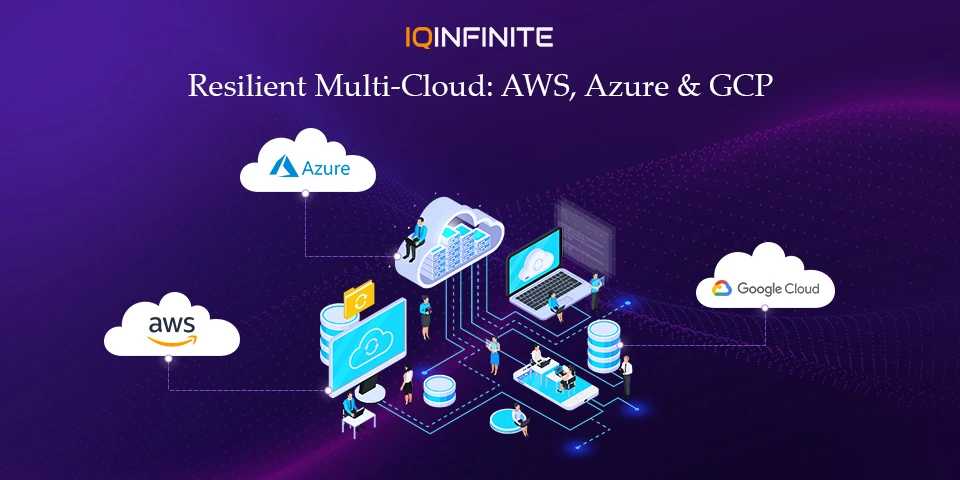How to Build a Resilient Cloud Infrastructure Across AWS, Azure and GCP

In today’s multi-cloud era, businesses no longer rely on a single cloud provider. Organizations are now adopting multi-cloud strategies across AWS, Azure and Google Cloud Platform (GCP) to achieve resilience, flexibility and cost optimization. Technologies like Starlink Internet are enabling faster, more reliable global access to cloud resources, especially for distributed teams and remote data centers.
Enterprises such as Autoland AG exemplify how industries can leverage multi-cloud architectures to improve scalability, maintain uptime and enhance customer experiences across global operations.
But with multiple clouds comes complexity ensuring high availability, security and disaster recovery across environments requires strategic design and modern DevOps automation.
Step 1: Adopt a Multi-Cloud Architecture Strategy
Key Benefits:
- Availability & Failover: Minimize downtime by distributing workloads across AWS, Azure and GCP.
- Vendor Independence: Reduce dependency on a single provider.
- Cost Optimization: Leverage each cloud’s strengths e.g., AI tools on GCP, compute power on AWS, enterprise integration on Azure.
Multi-cloud adoption has surged over 82% of enterprises now use more than one cloud provider (Gartner, 2025).
Step 2: Implement Infrastructure as Code (IaC) with Terraform
Best Practices:
- Maintain modular Terraform configurations for each provider.
- Use Terraform Cloud or Atlantis for remote state management and CI/CD integration.
- Implement GitOps workflows to automate infrastructure changes safely.
Terraform v1.8 introduces drift detection and state encryption, enhancing reliability in multi-cloud management.
Step 3: Leverage Kubernetes for Multi-Cloud Workload Orchestration
Recommended Setup:
- Deploy clusters across each cloud for redundancy and load balancing.
- Use service mesh tools like Istio or Linkerd for cross-cloud communication.
- Integrate Helm charts for consistent deployments across environments.
Cross-cloud Kubernetes federation is now mainstream simplifying disaster recovery and real-time scaling across multiple providers.
Step 4: Optimize Cloud Networking & Connectivity
Key Strategies:
- Use Global Load Balancing (Cloudflare, AWS Route 53, Azure Front Door).
- Enable Private Interconnects (AWS Direct Connect, Azure ExpressRoute, GCP Interconnect).
- Implement multi-region replication for mission-critical data.
Use SD-WAN solutions (VMware or Cisco) to secure and optimize multi-cloud data flow.
Step 5: Automate Monitoring & Incident Response
Integrate These Tools:
- Metrics: Prometheus + Grafana
- Logs & Tracing: ELK Stack or OpenTelemetry
- Alerting & On-Call: PagerDuty or Opsgenie
AI-powered monitoring platforms like Datadog AIOps and New Relic AI can now predict failures before they impact uptime a major step toward proactive resilience.
Step 6: Implement Multi-Cloud Security & Compliance
Key Steps:
- Adopt a Zero-Trust Architecture across providers.
- Use Cloud Security Posture Management (CSPM) tools like Prisma Cloud or Wiz.
- Automate patching and vulnerability scanning with Ansible or Azure Defender.
Hybrid IAM (Identity Access Management) is trending enabling unified access control across AWS IAM, Azure AD and GCP IAM.
Step 7: Regular Testing & Disaster Recovery Simulation
Best Practices:
- Conduct chaos engineering with tools like Gremlin or LitmusChaos.
- Perform disaster recovery drills every quarter.
- Use backup-as-code approaches with Velero or CloudEndure.
Adopt automated failover playbooks that trigger based on metrics or outages ensuring instant response to unexpected disruptions.
Conclusion
By strategically leveraging Terraform, Kubernetes, automation frameworks and AI-powered monitoring, your DevOps team can create a unified ecosystem where AWS, Azure and GCP work together seamlessly.
The result? A scalable, secure and future-ready cloud foundation that keeps your business always connected no matter what challenges arise.
